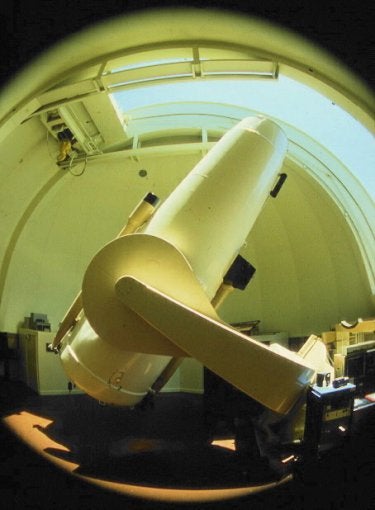NASA’s Near-Earth Asteroid Tracking (NEAT) team scans the sky for potentially hazardous asteroids using the fledgling QUEST (Quasar Equatorial Survey Team) camera at California’s Palomar Observatory. While this camera is in the infancy of its career, the QUEST instrument has already proven invaluable in the hunt for sun-orbiting rocks in our solar system.
The NEAT team detected the near-Earth object, now called 2003 NL7, on July 8, 2003. Follow-up measurements by three other observatories and the Minor Planet Center confirmed the discovery. Although 2003 NL7 is classified as a near-Earth asteroid, it has no chance of impacting the planet. The asteroid maintains a solar orbit of 2.97 years and its closest approach to Earth’s orbit is about 15.6 million miles (25.1 million kilometers).
Mounted on Palomar’s 48-inch (1.2-meter) Oschin Telescope in April, the QUEST camera is a joint effort by Yale University and Indiana University. The instrument’s purpose is to identify and classify quasars, near-Earth asteroids, trans-Neptunian objects, supernovae, and other astronomical bodies and occurrences. With 112 charged coupled devices (CCDs) set over the Oschin’s focal plane, the QUEST camera possesses the ability to create images with 161-megapixel capability. When the instrument is completely calibrated, it will have a significant influence on the discovery of near-Earth asteroids.
“We expect the new camera to increase the efficiency of detection of near-Earth asteroids by some 3 to 4 times that of the camera it replaced,” explains Raymond Bambery, NEAT’s principal investigator. “This will make a major contribution to NASA’s goal of discovering more than ninety percent of near-Earth objects that are greater that .62 mile (1 km) in diameter by 2008.”










